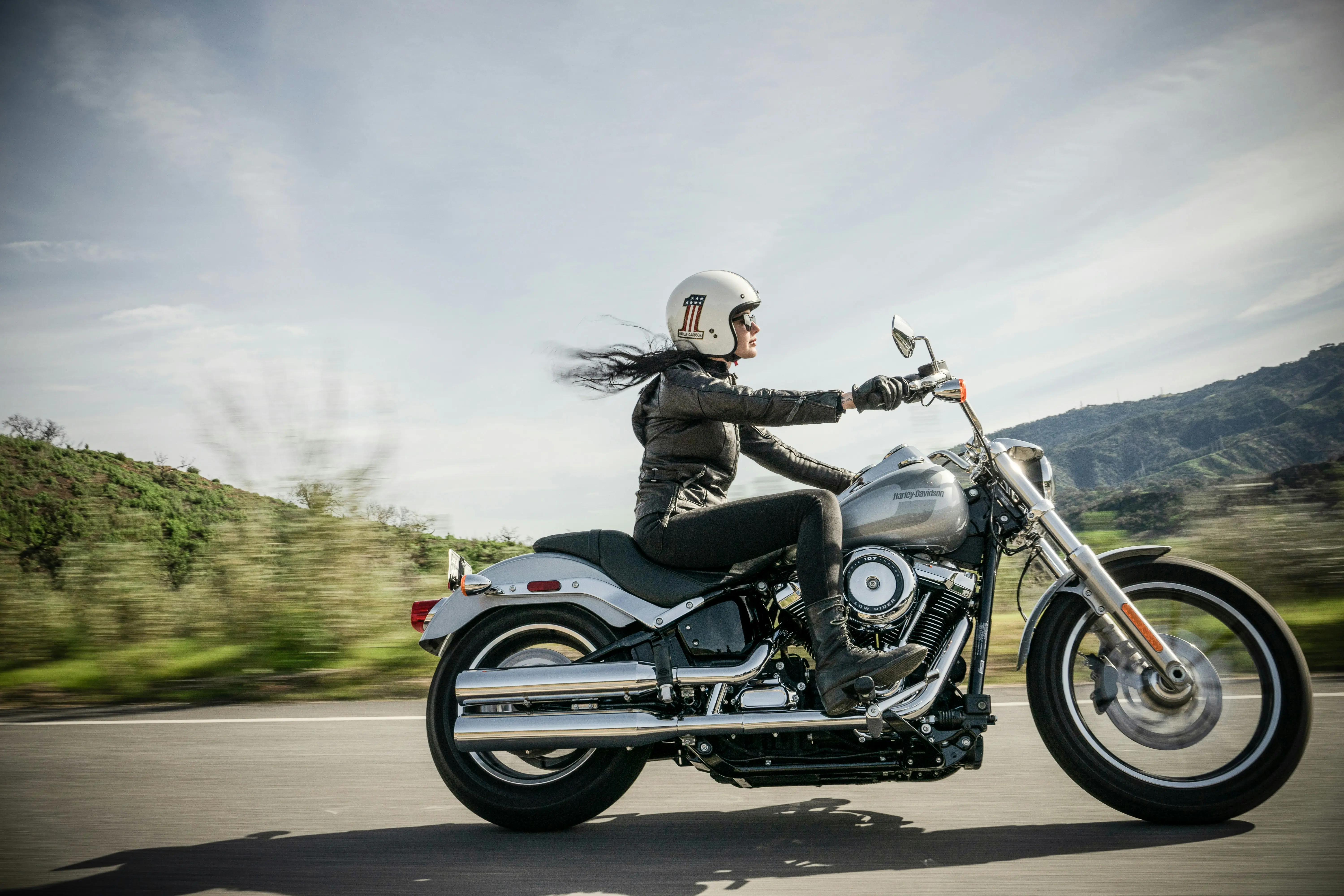Motorcycle insurance is mandatory coverage for motorcycle owners in almost every state (except Florida and New Hampshire) and can be obtained through many traditional auto insurance companies.
Buying motorcycle insurance is simple, but there are minor differences between the rules for motorcycle insurance and auto insurance. For example, did you know that your policy might not cover any injuries that you cause your motorcycle passenger? Here’s what you need to know about motorcycle insurance so you can ride legally and be protected.
How much does motorcycle insurance cost per month?
Budget $120 to $200 for a liability-only insurance policy and $360 to $600 for full coverage, according to MoneyGeek and Progressive. Full coverage includes comprehensive and collision insurance that covers damage to your motorcycle in an accident and also in case of theft, vandalism, fire and falling objects.
How much does full coverage motorcycle insurance cost?
The costs can vary by state. For example, Progressive says that in its low-cost states like Alabama and Wyoming, your annual policy average is $147.42 for basic motorcycle liability coverage. However, it goes up to $206.33 for a high-cost state like New Jersey and Arizona.
What does motorcycle insurance cover?
Most states require you to have bodily injury (BI) and property damage (PD) liability insurance at minimum, but others go further and require you to have personal injury protection (PIP) and uninsured (UM) or underinsured motorist (UIM) protection. Here are the definitions for each type of protection:
- BI: Covers medical expenses and other costs if you injure someone in an accident where you’re at fault.
- PD: Pays for repairs to another person’s vehicle or property if you’re at fault in an accident.
- PIP: Covers medical expenses, lost wages or funeral costs after an accident, regardless of fault.
- UI/UIM: Protects you financially if you’re in an accident with a driver who has insufficient or no insurance.
Most states require PD and BI but some have additional requirements.
| U.S. state | Additional coverage required |
|---|---|
| Arkansas | PIP |
| Connecticut | UM, UIM |
| Delaware | PIP |
| District of Columbia | UM |
| Hawaii | PIP |
| Illinois | UM, UIM |
| Kansas | PIP |
| Kentucky | PIP, UM, UIM |
| Maine | UM, UIM, |
| Maryland | PIP, UM, UIM |
| Massachusetts | PIP |
| Michigan | PIP |
| Minnesota | PIP, UM, UIM |
| Missouri | UM |
| Nebraska | UM, UIM |
| New Jersey | PIP, UM, UIM |
| New York | PIP, UM, UIM |
| North Carolina | UM, UIM |
| North Dakota | PIP, UM, UIM |
| Oregon | PIP, UM, UIM |
| Pennsylvania | PIP |
| South Carolina | UM |
| South Dakota | UM, UIM |
| Texas | PIP |
| Utah | PIP |
| Vermont | UM, UIM |
| Virginia | UM, UIM |
| West Virginia | UM, UIM |
| Wisconsin | UM |
Several optional coverages include:
- Collision insurance: Covers damage to your motorcycle from collisions.
- Comprehensive: Covers damage from anything except collisions – wildlife accidents, fire, vandalism and theft.
- MedPay: A less-comprehensive version of a PIP, covers medical expenses.
- Guest passenger liability: Unique to motorcycle policies, provides liability coverage if you get into an accident and are legally responsible for your passenger’s medical expenses. This is sometimes an add-on to your policy, or it might be included as a standard coverage.
There are a few exceptions to these. A common question is “Do you need motorcycle insurance in Florida?”
Florida and New Hampshire don’t require you to have an insurance policy for motorcycles if you can prove financial responsibility, which means you must prove you can pay for damage you cause in a motorcycle accident. In both states, one method includes depositing funds or securities with the state, or you could just buy insurance.
How to find cheap motorcycle insurance
Since insurance rates can vary between providers, comparing three to five quotes before committing to a policy is the best way to make sure you’ve found the best motorcycle insurance rate for your circumstances.
Here are a few other ways to get the best deal on your motorcycle insurance premium:
- Motorcycle insurance discounts: Ask your insurance agent if they offer insurance discounts you may qualify for, such as bundling multiple policies or switching to automatic bill payments. Some providers will even discount your rate if you complete a motorcycle safety course.
- Add anti-theft devices: You might be able to reduce your insurance costs by adding anti-theft devices to your bike.
- Skip additional coverage: Depending on the age and value of your bike, you may not need to add collision or comprehensive insurance to your motorcycle’s policy. Dropping full coverage will reduce the cost of insurance for your motorcycle.
Can you get motorcycle insurance without a license?
Getting motorcycle insurance without a license is possible, but not all insurers are willing to do so.
This presents complications, for example, if you try to buy a motorcycle for collection purposes, even if you don’t intend to ride it. Here’s a scenario: You buy a rare motorcycle and transport it home on a trailer. The day you want to transfer the title to your name, the DMV wants you to show proof of insurance to record the transaction. So what do you do?
Most insurers aren’t willing to sell insurance to unlicensed riders, but if you do find an insurer, you might need to undertake these steps:
- Name yourself as an excluded driver, meaning you won’t be covered if you drive the bike.
- Name a licensed driver as the primary operator, where their driving record will determine the insurance rate.
Ensure you don’t drive unlicensed, as this leads to penalties and lack of coverage in accidents. Of course, if you intend to buy and ride the motorcycle, you absolutely need to have a license to ride the motorcycle.
Motorcycle insurance requirements for scooters and mopeds
Some states will require motorcycle insurance for scooters and mopeds, but it depends on the size of their engines or top speed.
Here’s what you can typically expect:
- You need motorcycle insurance: If your scooter or moped has an engine that is 50 cubic centimeters (cc) or larger or can reach a top speed of 30 mph or higher.
- You do not need motorcycle insurance: If your scooter or moped’s engine is smaller than 50 cc or cannot exceed a top speed of 30 mph.
What to do: Check your state’s laws for specific guidelines and requirements regarding scooters and mopeds.

Xuyun Zeng is a writer and editor with a wide-ranging content background including tech, journalism, cars and health care. After graduating with highest honors in journalism, Xuyun led a newspaper to win eight awards, helped start an award-winning film industry podcast and has written over a hundred articles about cars repair, state laws and insurance. Prior to joining Jerry, Xuyun worked as a freelance SEO consultant with a mission to create the best content that will help readers and grow organic traffic.

Phil Metzger is a personal finance editor and writer with more than 30 years of experience editing and writing content across a variety of industries. In writing and editing for Jerry, Phil’s mission is to help car owners better understand their vehicles and the costs associated with car ownership. Before joining Jerry, Phil worked as a writer and editor for newspapers, magazines, television radio and online news. His work has appeared in many major publications and websites over the years, including a series he edited that was a finalist for a Pulitzer Prize.









